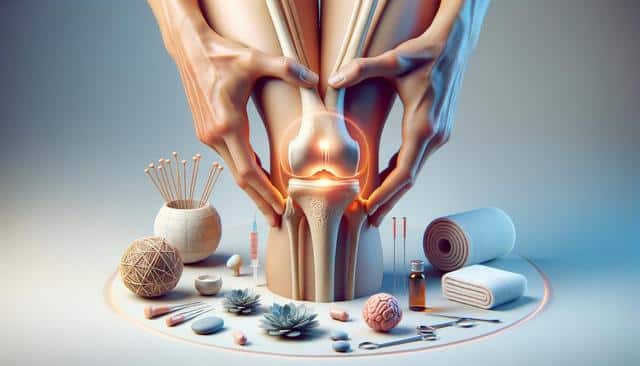
Understanding and Alleviating Knee Pain: Your Comprehensive Management Guide
Understanding the Causes of Knee Pain
Knee pain can stem from a wide variety of sources, making it essential to identify the underlying cause before selecting an appropriate treatment plan. The knee is a complex joint that supports much of the body’s weight, making it susceptible to wear, injury, and inflammation. Common causes include osteoarthritis, ligament strains, meniscus tears, bursitis, and patellar tracking issues. In younger individuals, sports-related injuries are frequent culprits, while older adults may experience degenerative changes due to aging. Additionally, biomechanical issues such as flat feet or improper gait can contribute to long-term knee discomfort. Understanding what triggers your pain—whether it’s movement, prolonged sitting, or weather changes—can offer valuable clues for diagnosis and tailored care.
Diagnostic Approaches for Accurate Assessment
Effective management of knee pain begins with a proper diagnosis. Healthcare providers typically start with a physical examination, evaluating range of motion, swelling, and structural alignment. Diagnostic imaging such as X-rays, MRIs, or CT scans may be necessary to visualize internal structures and rule out fractures or soft tissue injuries. In some cases, blood tests may be used to detect signs of infection or autoimmune conditions. Accurate diagnosis allows clinicians to differentiate between acute injuries and chronic conditions, enabling a more focused treatment plan. If symptoms persist or worsen despite initial treatment, consulting a specialist in musculoskeletal disorders or orthopedic medicine is advisable.
Treatment Options: From Conservative to Advanced
Once a diagnosis is established, treatment can range from conservative methods to surgical interventions, depending on the severity and origin of the pain. For many individuals, non-surgical approaches are effective and may include:
- Physical therapy to strengthen surrounding muscles and improve joint stability
- Anti-inflammatory medications to reduce swelling and discomfort
- Assistive devices like braces or orthotics to correct alignment and relieve pressure
- Cold or heat therapy and lifestyle adjustments such as weight management
In cases where conservative treatment fails, minimally invasive procedures such as corticosteroid injections or arthroscopy may be recommended. For severe or degenerative conditions, knee replacement surgery could be considered as a final step. It’s important to work closely with healthcare providers to evaluate the risks and benefits of each treatment option.
Preventive Measures and Lifestyle Adjustments
Preventing knee pain involves a proactive approach that includes both physical and environmental adjustments. Maintaining a healthy weight reduces stress on knee joints, while regular low-impact exercises like swimming or cycling can enhance flexibility and muscle support. Wearing properly fitted footwear and using ergonomic aids during physical activity can also help minimize strain. Consider integrating these habits into your routine:
- Stretching before and after workouts to maintain flexibility
- Using knee supports during high-impact activities
- Taking breaks during prolonged sitting or standing
- Maintaining a balanced diet rich in anti-inflammatory nutrients
These adjustments, although simple, can significantly lower the risk of developing chronic knee conditions and improve daily comfort.
Managing Chronic Knee Pain for Long-Term Relief
For individuals dealing with ongoing knee discomfort, long-term management strategies are essential. Chronic knee pain often requires a combination of therapies tailored to the individual’s lifestyle and physical limitations. Techniques such as guided exercise programs, manual therapy, and occupational therapy may be integrated into a comprehensive care plan. Some patients benefit from alternative therapies including acupuncture or ultrasound therapy, which can offer relief without the side effects of medication. Additionally, support groups and educational resources can empower patients by offering strategies and emotional support. Self-monitoring tools like pain journals or activity trackers can also help individuals identify triggers and measure progress over time. With consistent effort and a flexible approach, chronic pain can often be managed effectively, allowing individuals to maintain an active and fulfilling lifestyle.
Conclusion: Taking Control of Your Knee Health
Managing knee pain requires a multi-dimensional approach that combines medical insight, lifestyle changes, and personal awareness. By understanding the causes of your pain, seeking accurate diagnosis, and exploring a full range of treatment and preventive strategies, you can take meaningful steps toward lasting relief. Whether you’re recovering from an injury or managing a chronic condition, working closely with healthcare professionals and staying proactive in your care can significantly improve your mobility and overall well-being.